Vietnam – Part 7: Cu Chi Tunnels
CONTINUED FROM>> About Us >>
About a month after Barish joined us, Vietnam celebrated Tet – the Vietnamese New Year. Schools and offices were closed, and we found ourselves with a few days to plan an adventure. Handan had learned of the Cu Chi tunnels from her coworkers, and it seemed like a great day trip. Situated in the Cu Chi district of Saigon, the tunnels were used extensively by the Viet Cong during the Vietnam war as hiding spots, supply lines, hospitals, dormitories and weapon caches. The tunnels in Cu Chi are just a small part of a vast network of tunnels underneath much of Southern Vietnam. Though the US military was aware of the underground network and launched several campaigns to try to destroy them, they continued to be a thorn in the side of US top brass until the war ended in 1975.
Continuing the traditions of all countries on whose soil foreign blood has spilled, the Vietnamese government designated the tunnel system as a war memorial park and now charges admission for the privilege of seeing it. Where once death ruled, the dollar now reigns.
Instead of the one and a half hour bus ride, we decided to book a Saigon River tour that would end at the Cu Chi tunnels. This seemed like time better spent. By that point, we were well versed in Saigon traffic, and had little interest in seeing more. The Sông Sài Gòn (Saigon River) sang for us. We heeded her call.
I drove us all down to the riverfront and parked the scooter for the day. We wandered around while we awaited our appointed departure time and took in the sights of the esplanade.


When the hour came to depart, we made our way to the docks and looked for our boat. Ay, a fine vessel she was!

I saw a guy already on board. He wore a gray polo shirt, faded gray jeans, and he sported thick-framed eyeglasses on his face. He was clean-shaven and looked every bit the IT professional. I figured he worked for a bank downtown or perhaps for a construction company like the one Handan’s firm worked with. His family may have lived in a far-off village, so maybe he was taking a little day trip since he couldn’t afford the time and money to travel back home to see them.
He looked like he spoke English, so I gave it a shot (far safer than me trying to speak Vietnamese).
“Hello.” I said as we stepped onto the gunwale and into the boat.
“Hello.” Said the IT guy.
We sat near him and spoke amongst ourselves. A few minutes later, a blond family boarded. I can’t remember if they were German or Scandinavian, but they weren’t native English speakers. We smiled at them and said hello.
I turned to the IT guy. “Do you know when our captain will be here.” I said.
He laughed. “I’m Captain!” He said and jumped up to start the engine and throw off the lines.
Prejudices and preconceptions. They’ll get you every time.
The Saigon River has its source in Southeastern Cambodia, and from there it winds and meanders over the course of 140 miles until it empties into the Soai Rap River southeast of Saigon. The river is part of the warp and weft of Saigon life. It is the city’s main source of water, and its waters are an essential trade route for tankers and barges. Saigon depends on the river, yet it feels like an afterthought. There are no grand riverside homes, and only a few cafes and restaurants take advantage of its vistas. There is no vibrant riverfront culture in Saigon. The city seems to turn its back on the river.
Despite this, the river thrums with the sound of ships and the commerce they bring. But commerce is rarely kind to natural beauty, unless it is profiting from it. The Saigon River is a brown polluted mess. It is the lifeblood of the city, and it is also a sewer.
As we motored up towards the Cu Chi tunnels, we passed raft after raft of vegetation. I had seen these mats before from one of the few riverside restaurants in District 2 that we used to frequent. All day and all night and especially after a heavy rain, small islands of vegetation would float down the river. I later learned that the rafts were water hyacinth, and it thrives in dirty, polluted water.
The hyacinth rafts were everywhere. Some small…

Some large.

And it was killing the Saigon River.
Here are some photos I pulled from other sites to show the extent of the hyacinth problem in Vietnam.


In some places, the rivers have become un-navigable.


Yes, that’s a river.
Looking beyond the hyacinth, the river banks offered glimpses into the lives of those who live and work on the river.
This may be a cafe, or it may be abandoned. It may be from the French Colonial years. It was hard tell just buzzing by in a boat.
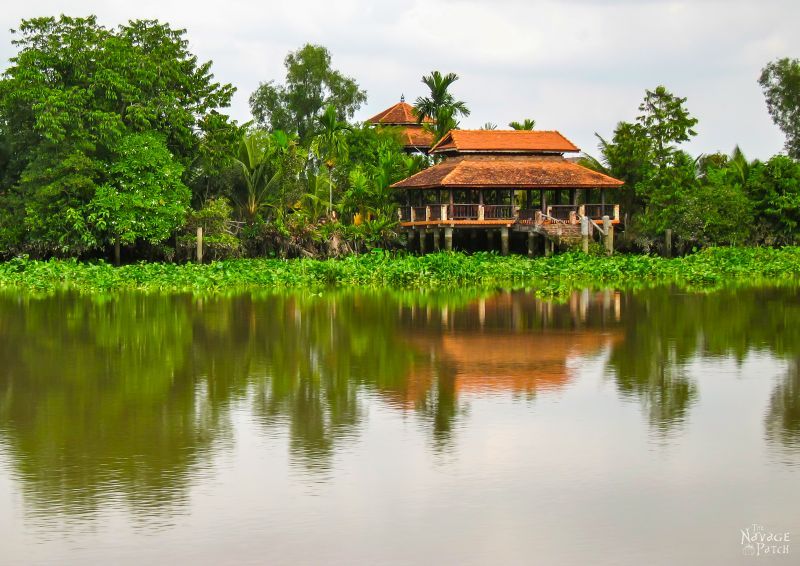
There were small fishing villages.



There were cattle farms. Perhaps the cows ate the hyacinth? If so, it was a free and limitless source of fodder.

We saw a few aqua pens. My guess is they were filled with freshwater shrimp, but I can’t say for sure.

It looked as though some structures were being reclaimed by the jungle and the river.

Barish and the blond girl sat in the bow together enjoying the wind through their hair and the occasional bow spray on their faces.

When we arrived at the Cu Chi Tunnels, we were ushered into a low, thatch-roofed structure to watch an introductory film.

Grainy 8mm footage and distorted, warbling sound introduced us to the noble men of North Vietnam who valiantly protected their homeland from the “White Devils” from America. The film carried on in that same vein.
Yikes.
I glanced around, shrunk a little lower in my seat and wished for a hat to go with my sunglasses. My eyes burned, and I cursed my lack of epicanthic folds. I looked down at my white arms, fairly glowing in the dimly light room.
I’m kidding, of course. They stopped hunting White Devils decades ago, but I found it interesting to look at Americans through the lens of the Viet Cong. To them, we were savage invaders trying to destroy their culture and take away their country.
I’m not here to judge either side or pontificate upon the politics of the matter. As I promised when I started writing about Afghanistan, politics has no place in this blog. But as I also stated in that early Afghanistan post: I will defend our soldiers to my dying breath. Our boys were there under orders, not by choice. If I had a beef with the war itself, that beef would be with the politicians, corporations and other war-mongering factions that have long slithered around our nation’s capital.
After the propaganda reel, we headed out with a group and a guide to explore the tunnels and the area around them. Here was a mock-up of the tunnels.
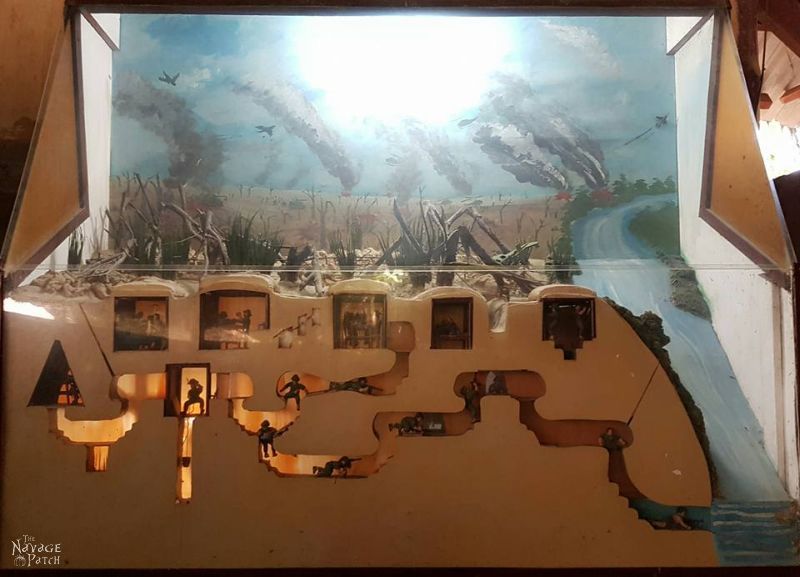
I found a better picture online from the Cu Chi tunnels website:
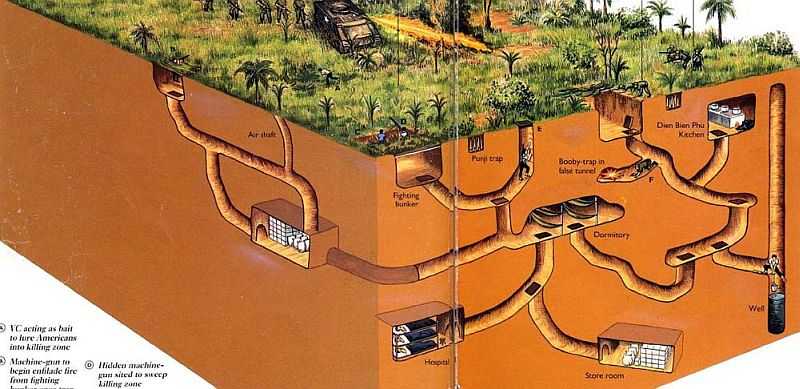
Living conditions in the tunnels were abysmal. Malaria was rampant, the air was foul, the water was polluted, and it was just generally hot, cramped and miserable. It was estimated that almost 100% of those living in the tunnels were infected with significant intestinal parasites. When US forces would carpet bomb the area, the Viet Cong would be forced to live in those hellish tunnels for days on end without emerging.
There were hidden entrances all over the forest floor, almost invisible to those who didn’t know their location.
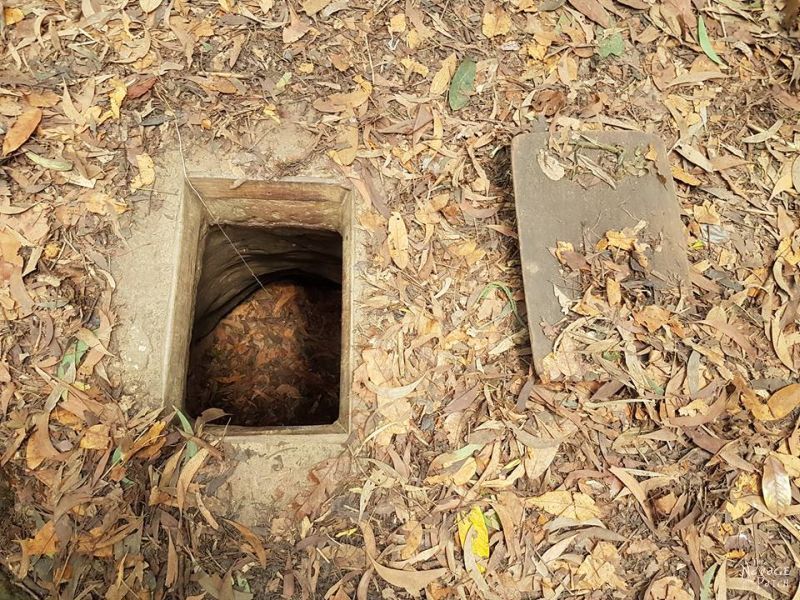
One of the guys in our tour group volunteered to try out one of the hidden entrances.
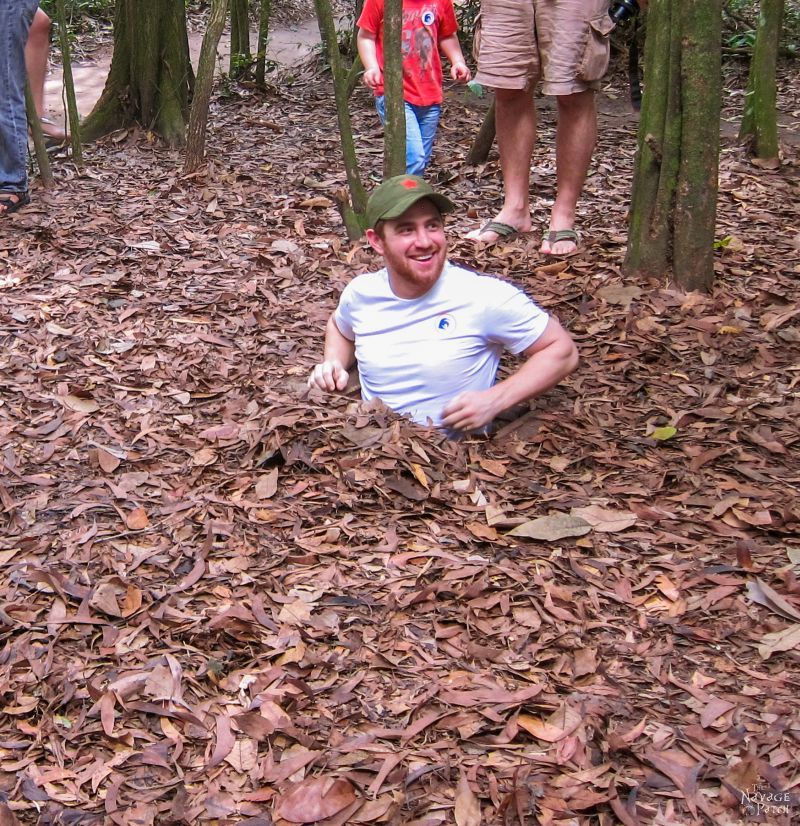

And he’s gone without a trace.

Besides the tunnels for the Viet Cong, the area was riddled with traps for the American soldiers. They are nightmarish things like you’d find in a horror movie. I can’t imagine the pain and suffering of those unlucky soldiers who happened upon them.





Our Captain stands next to a door trap.

After the trap tour, we got the chance to see the tunnels up close and personal.


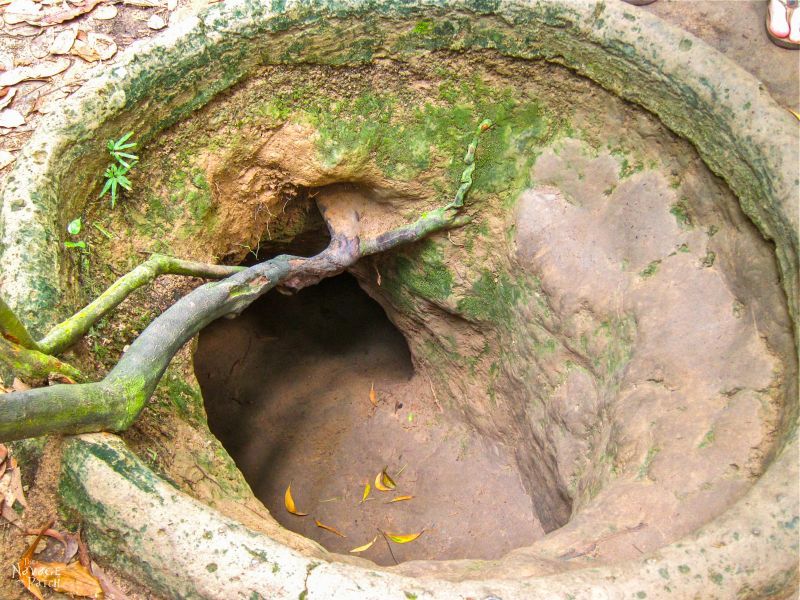
And then it was time for us to go into the tunnels. I can tell you one thing – those tunnels were not made for jiggly middle-aged dudes like me. Jeezum Crow, it was a tight fit! The svelte man in the photographs is not me (obviously), but one of the Europeans on the tour.


Handan did manage to get a picture of me struggling out of the tunnels.

Phew! Thought I might not make it.
After the cramped tunnels, we stretched our legs near the carcass of an American tank.

Once a war machine, now a playscape. This is repurposing at its very best.
The tour concluded, as most tours do, at a gift shop. We bought a few knick-knacks and some goodies for Barish, and then I found the machine guns. For $10 you can fire 20 rounds from an M-16 or an AK-47. Figuring I was past my soldiering years, I jumped at the chance to shoot an M-16. I laid down my money and grabbed the rifle (it was chained to a post and had only limited movement for safety). I aimed down the firing range – an empty field – and squeezed off 20 glorious rounds from a scratched and battered M-16. It was electrifying! I thanked the attendant (who was dressed in military garb) and rejoined my family.
We walked back to the boat, climbed aboard and settled in for the relaxing ride through the hyacinth-choked waters of the Saigon River. She may have brown and polluted, but she was still beautiful and serene.

CONTINUE ON TO>>

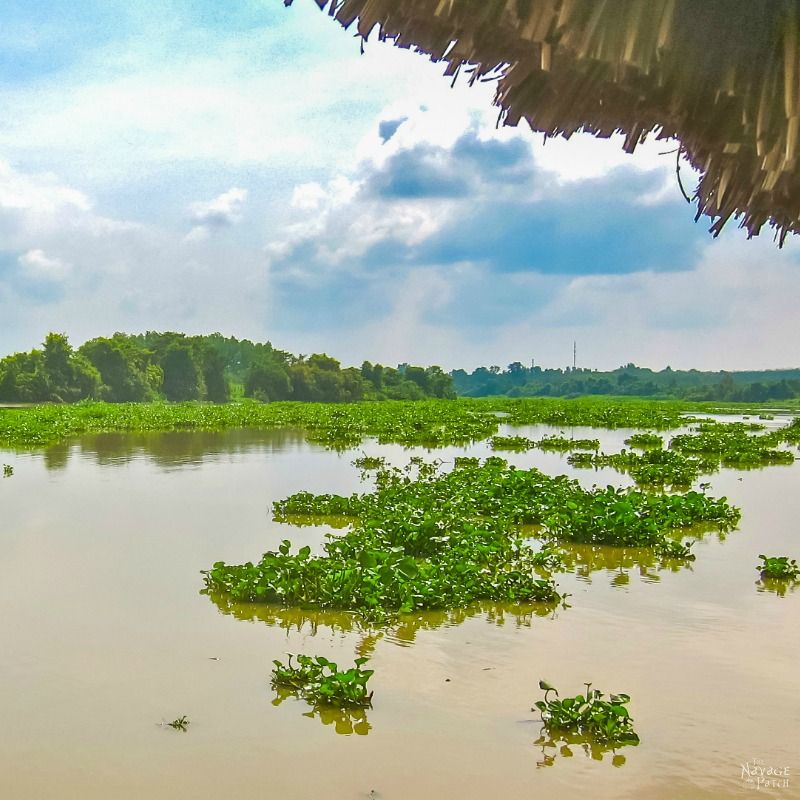
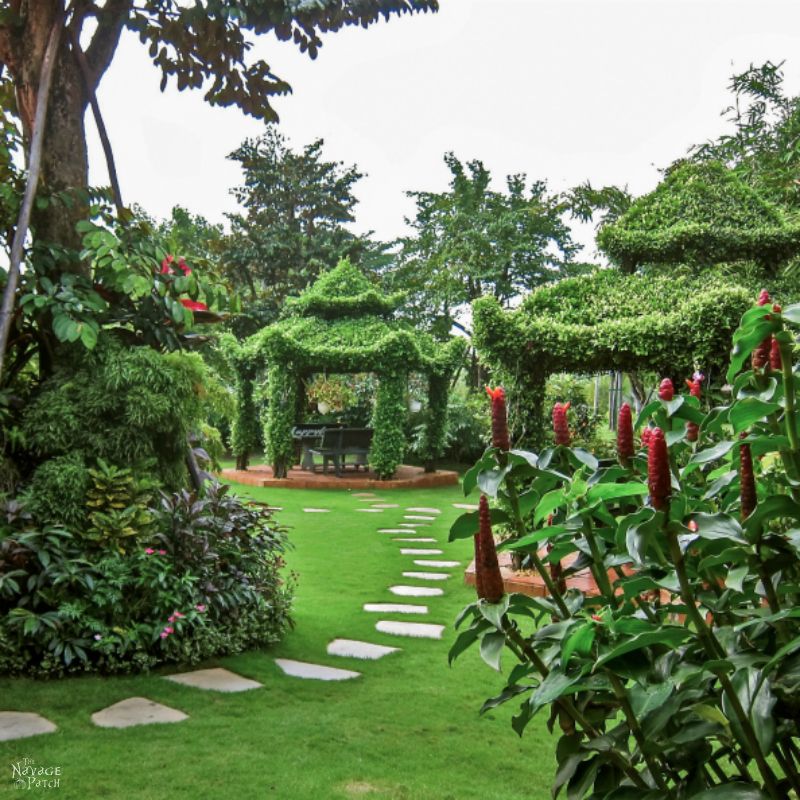
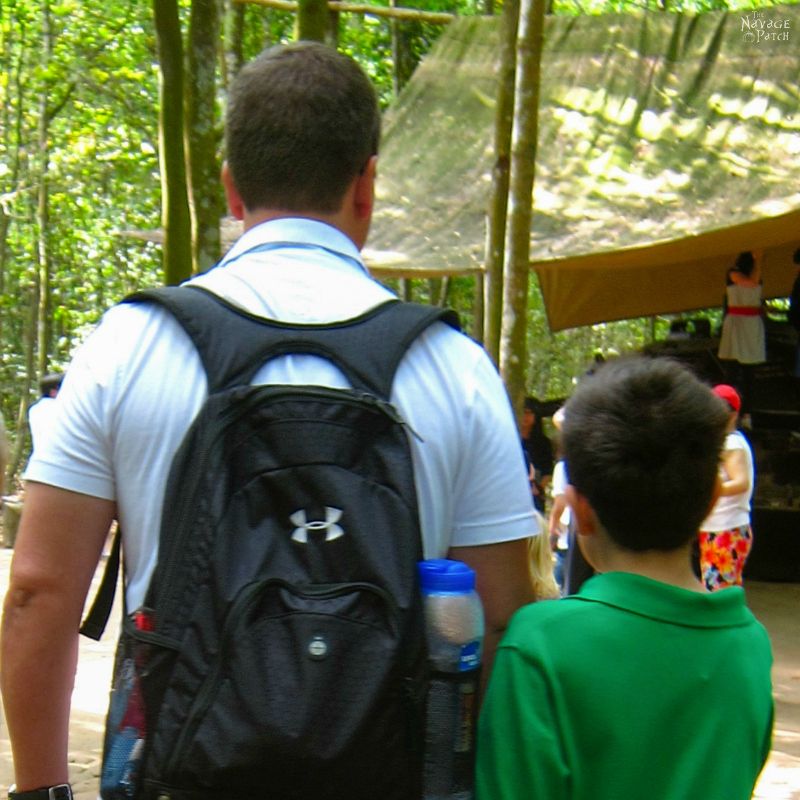
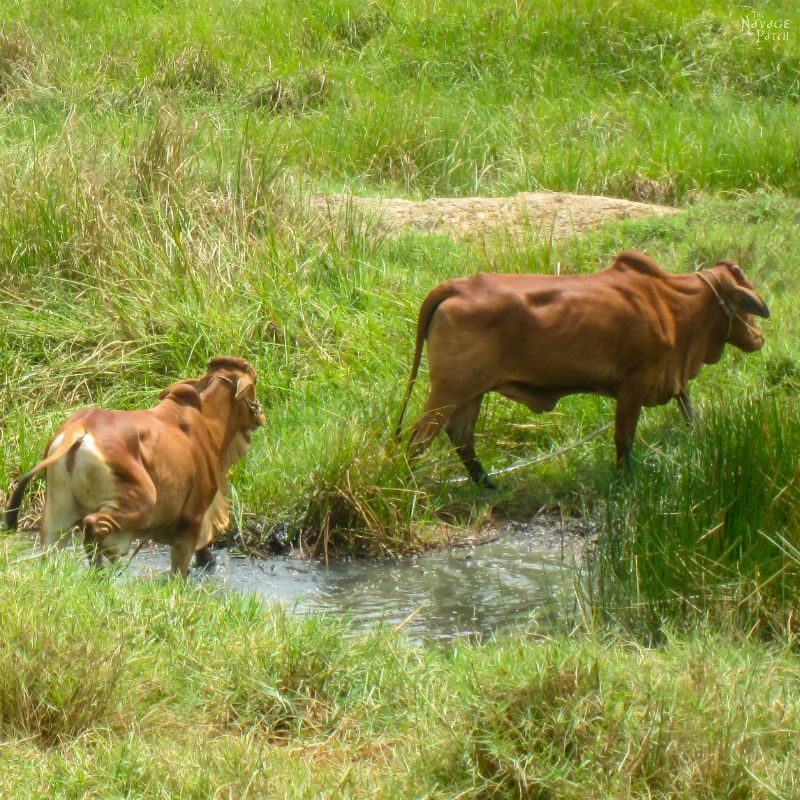
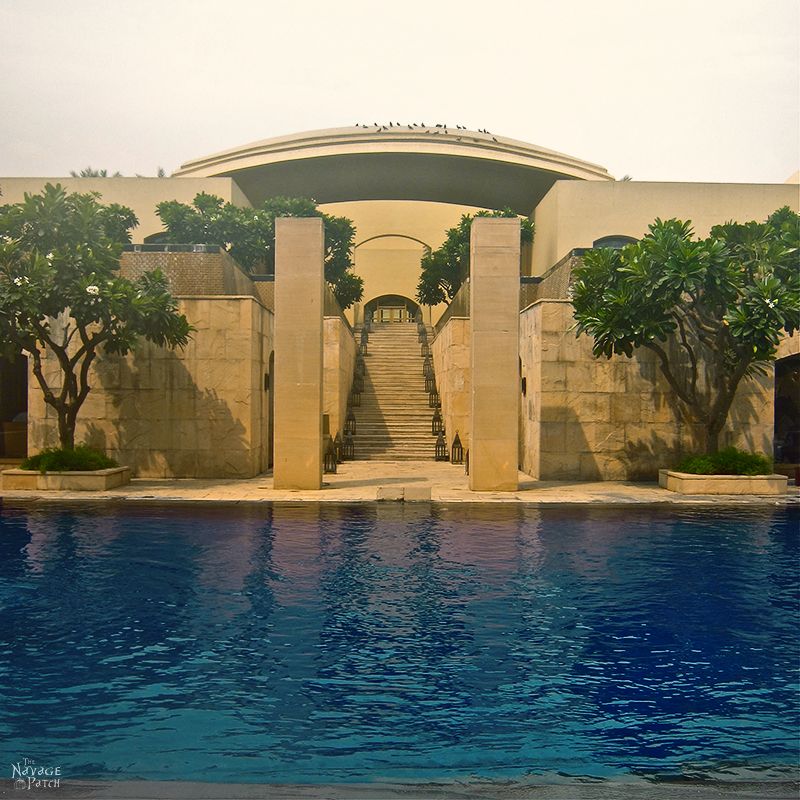
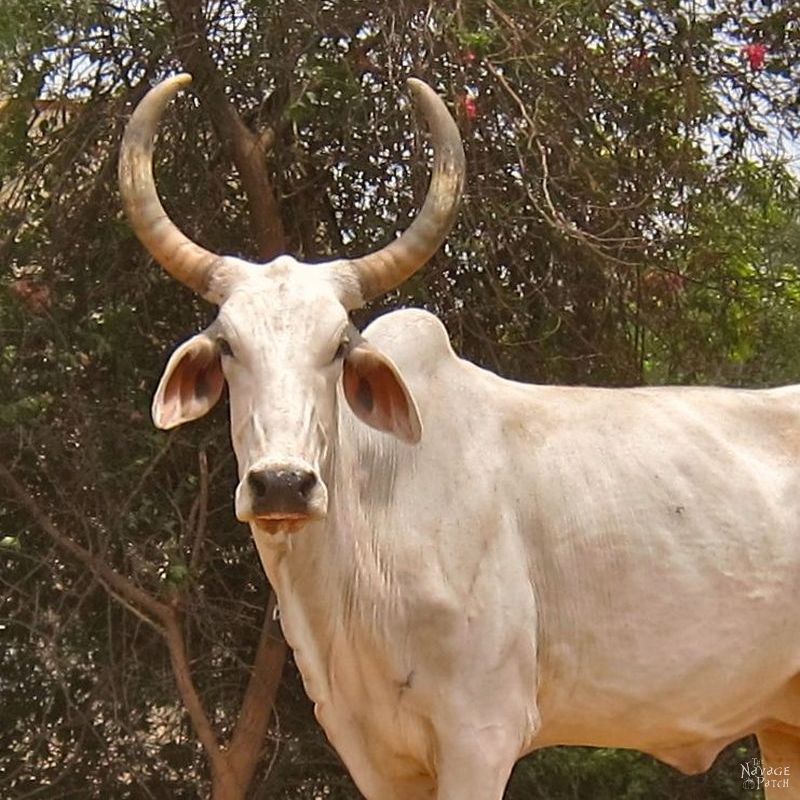
My father served at Cu Chi 1968. It was definitely hell on earth for the soldiers.
Thank you for the sacrifice your family made for his service.
I can’t imagine the horrors he must have seen, Barbara. Handan and I are thankful for his service.
Thank you for this, it is eye opening. I’m 100% with you on the soldiers and the use of that tank, as well.
Thank you, Derry! 🙂
ahhhh greg story time these pics were terrific there are hyacinth problems in the south in the good old USA too, when i read your stories i try to keep in mind that this is such a different culture than ours and how they live is their way and should not be appalling to me xx
Hi Chris, I didn’t realize we had a hyacinth problem. Nasty stuff. I wonder if we could eat it? Vietnam and all of the places we’ve lived have vastly different cultures than ours. They look at us with the same “you crazy!” look we sometimes give them, lol! Best to keep an open mind and try to imagine yourself in their shoes.
YAY! The story continues! So great to read another installment. Thank you for writing/posting it, and thank you even more for another glimpse into a different culture and the kinds of things that those in uniform are up against. Both are imperative for a well-informed public. As Mark Twain wrote: “Travel is fatal to prejudice, bigotry, and narrow-mindedness, and many of our people need it sorely on these accounts. Broad, wholesome, charitable views of men and things cannot be acquired by vegetating in one little corner of the earth all one’s lifetime.”
Mark Twain was a great writer and a profound thinker. Thanks for sharing this quotation of his! I will be getting back in the groove with the travel posts, Cynthia, so keep an eye out for a couple more about Vietnam, and then I’ll shift to India.